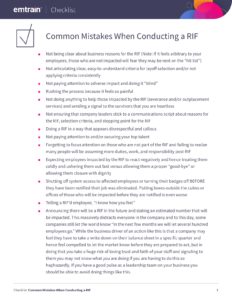Tesla Layoffs and Workforce Reduction
Recently, Tesla initiated significant layoffs, impacting thousands of positions and rescinding numerous job and internship offers. These cutbacks come amid a broader restructuring effort by the company in response to evolving market conditions and strategic adjustments. In the case of Tesla’s layoffs, market conditions such as shifts in consumer demand for electric vehicles, competitive pressures from other automotive manufacturers, regulatory developments in the automotive industry, and broader economic factors may have played a role in shaping the company’s decision-making process. Tesla’s workforce reduction has affected many individuals.
Internships cut just weeks before start date
A prospective intern who had been offered an internship position at Tesla shared that the company rescinded the offer. This happened despite the individual having already spent thousands of dollars on housing arrangements. The internship was set to begin in just three weeks. There are other similar stories with another prospective intern getting an email about their flight details in the morning and an email about the internship being cut in the evening.
WARN Act
WARN Act filings require companies to provide employees notice of mass layoffs or plant closures 60 days in advance. Yet, the notifications arrive within a month of Tesla’s announcement that it would terminate over 3,300 employees throughout California, encompassing roles in Palo Alto and Fremont.
In HR, when you have to undertake a significant reduction in force (RIF), it’s vital to approach the task with utmost sensitivity and diligence. This means actively ensuring the protection of employees being let go, those remaining, and safeguarding your employer brand and workplace culture.
However, the regulatory environment is fast changing so please consult with counsel at the time of your layoff. Or, visit the federal website and corresponding state agency websites for current guidelines during a workforce reduction.

How to Conduct a Proper RIF
As you prepare to implement a workforce reduction, it’s crucial to be exceptionally well-prepared. Hopefully, no rumors have leaked out to distract the staff, and you’re not under any pressure to accelerate the process beyond your desired pace. If you’ve never conducted a RIF in your organization before, make sure the key stakeholders who need to be a part of this are fully clear on the timing and steps necessary to conduct this. Uncoordinated teams and processes result in bad outcomes. Avoid focusing too heavily on who is losing their job.
Many leaders become consumed by employees’ potential emotional reactions. Causing them to lose sight of the big picture. It’s human nature to worry about the emotions of your colleagues. However, remember everyone feels the impact, not just those who are going to be asked to leave. It’s critical in a RIF to not only think through how you will communicate this to the impacted employees. But ALSO to those not impacted as they are staying in your organization and you need them focused, motivated, and moving forward as fast as possible.
When and where you communicate matters
Once you are on the eve of communicating to the impacted employees, make sure you think of the best day of the week and time of day to communicate. If you have many people impacted, and you have different geographical considerations and time zones, you want to aim for a time that you can do it all concurrently. That is not always feasible, but aim for it because it minimizes distractions and rumors and reduces the time people spend wondering if they will be terminated.
An oncoming workforce reduction is never pleasant, so the setting where you give the news should be private. If you anticipate an adverse or highly reactive response, make sure you take measures to feel safe and include an extra person or have security nearby. Make sure you are ready and prepared. If you can, practice communication with another manager or leader who can help prepare you. Practice really helps here.
Notifying impacted staff remotely
In certain situations, you may be unable to meet some people in person. Due to the global pandemic, COVID-19, many jobs are now fully remote. The best advice in these situations is to use your best judgment. If you had to hear via phone call or video communication that your job is being eliminated, how would you want them to communicate it to you? The more humane and the more care you take in delivering the news and giving the impacted an opportunity to respond, the more likely you are to have a better outcome.
A past news story featured a 100+ person customer service team that was all notified via Zoom at the same time that the department was closing. The meeting organizers disabled the attendees’ ability to comment or talk. This led to extreme frustration and forced many impacted individuals to watch their colleagues break into silent tears of shock. Think carefully if you have a large remote group. Is there a way to make sub-groups or to have that be more intimate? Additionally, think about the impact of disabling the ability for anyone to express anything.
Invest in helping impacted employees
How you treat employees during a RIF will speak directly to your workplace culture. So be aware of what is at stake. The choices you make during a RIF will leave an impression with employees forever. Whether they are departing or staying with your organization. Remember, the people who remain are watching what you do and recognize this is how you will treat them if you ever let them go.
Your goal with the impacted employees is that they have a positive experience transitioning out of the company. You want the result to be that they work through their shock, anger, fear and reactions as fast as possible. This allows them to focus on big decisions they were not expecting or intending on having to face. For example, living without a salary and having to find another job. Anything you can do to help them through their change curve and help equip them to find a new job quickly is a worthwhile investment. From my perspective, it’s clearly worth considering investing in helping departing employees transition to another job. The whole idea behind a severance is to provide impacted staff some financial cushion to bridge them to a new opportunity. Consider offering severance in this situation as well as support to bridge them to a new opportunity
Second, ease the transition through a severance package, if possible. Showing the leadership team is humane and respects people goes a long way toward minimizing the negative and angry emotions that are inevitable with a RIF. Be consistent on how you apply your policy. If severance isn’t possible, do the work to bridge affected employees to a new role internally or externally. The goal is to help people move forward and minimize negative emotions. These
actions will lead to a smoother transition, and will ultimately lead to a more positive experience for employees.
Create an action plan and train to the plan
As you approach the notification date, make sure you have a comprehensive action plan and a crisp- clear timeline that addresses equipment, facilities, physical security, IT, and anything else. Make sure everyone is clear and is respecting the critical need for confidentiality and real time communication. Train managers and anyone else involved in the RIF so everyone is consistent with messaging. Some sage advice to keep in mind when conducting large RIFs: Never say “I know how you feel.”
Some key elements you need to think through is how long you are going to keep the notified people on payroll. Are you paying them two weeks in lieu of notice or are you paying them a two weeks notice over that period? When is their last day of employment? Are any of the impacted employees working on a work permit or visa and what timelines do those individuals face? Please note that many work visas (e.g., H1B, etc.) give workers a 60 day grace period upon termination to find a new job/employer sponsor. Therefore, the HR teams should give additional consideration and perhaps a transition period for workers on visas.
These are details that have to be proactively managed:
- the timeline of all activities
- who is responsible for each step
- who is the problem solver when a situation goes off track
- a clear communication plan
- any necessary security procedures (see below for a few caveats)
Implementing a RIF and Key Guidelines
Balance security with respect for the individual
You need to ensure the safety of your IP and secure your premises and property from theft and misuse. However, you don’t want to become fodder for workplace gossip and distraction by having security escort people from the premises.
People affected by the RIF will continue to have relationships and influence employees in your workforce. Show them humanity and respect on their way out. If you cut off system access immediately you may be signaling to the impacted employee a big lack of trust. This may rub them the wrong way and cause them to feel you are treating them harshly. Do your own security assessment to determine a process you feel protects everyone and sets the right tone. But, having conducted 100s of reductions in force over my career, treating people fairly and with respect in how you notify them and treat them afterwards has a long lasting impact.
Define and communicate a clear start and end to the workforce reduction process
When experiencing a RIF, there will be gossip and rumors flying around the organization. In order to contain and minimize the turmoil, it’s best to clearly identify the start and end point to the RIF. Let people know they are through the worst of it (if that is the case) and it’s time to start rebuilding the team. If the business climate or a global pandemic creates uncertainty, avoid saying things like “we will not let any more people go” or “we will not lay off more staff” unless you are absolutely certain. You ruin trust and credibility if you promise not to let more people go and then you do.
People will likely ask, “Are there going to be more RIFs?” so prepare a good answer.
Be humane and respectful during a tough business cycle or global pandemic
It’s easy to be nice and respectful when business is booming. It’s a whole lot harder to be respectful when business is contracting and/or the business needs realignment. After conducting the workforce reduction, focus on regrouping and motivating the remaining staff. You need to be mindful that a RIF is a hugely destabilizing event for an organization and you should prepare to help people understand “why” and remind them of how hard this decision was to make and how careful you were to help impacted staff.
Acknowledge emotions and low morale
During a RIF, productivity goes down. People fear for their jobs and feel upset that the company laid off their friends and co-workers. Additionally, they might feel overwhelmed by the increased workload or extended hours needed to compensate for the absence of their colleagues. Be ready to talk about this – anticipate these feelings and questions. It’s inevitable that emotions run high and productivity runs low. While a workforce reduction will cause negative emotions, acknowledge it and connect with people. Plan for your business to need a bit of time to heal. Then work hard at stabilizing the situation so people can focus on being a productive team again.
Give extra attention to top talent
When there’s a RIF and business is contracting, your top talent may start looking around for better opportunities. That’s why you need to give extra attention to your key players during a RIF. Open the lines of communication so they can express their fears and concerns about the organization.
The last thing you want during a RIF is to experience a loss of your key talent while the business is contracting and productivity is down. Get in front of it and talk to high risk cases so you are at least aware they may leave and can start planning.
Conclusion
When a RIF is necessary, it’s important to consider all the relevant issues and execute the plan. Rally and focus the troops on rebuilding the business. Spend time in the planning process and don’t get sloppy during execution. Ask anyone on your leadership team who has been let go in the past or experienced a RIF to share their lessons learned. It will be extremely helpful during a workforce reduction. Lastly, be sure to avoid these common mistakes which will destabilize the situation.












